Nonstick pans are great because they can
really help you use less cooking oil. Also, they’re easy to use and a
lot lighter than cast-iron or even stainless-steel frying pans, which
makes nonstick cookware a must-have item for every home chef. That said,
many people find that nonstick cookware isn’t as long-lasting as other
types of pans. But they don’t have to be that way at all.
As a matter of fact, a nonstick pan, be it a
Teflon, ceramic, or enamel one can last for years if taken care of
properly, but in most cases, it’s our own habits that are shortening
their life. Below, we list 10 such extremely common cooking and
maintenance mistakes that can ruin nonstick cookware - for you to avoid
in the future and make your nonstick pans last for years as they should!
1. Cooking acidic foods in nonstick pans
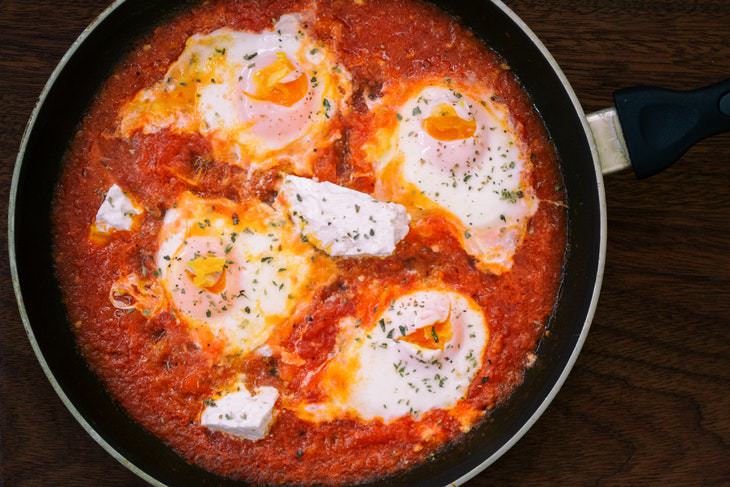

All nonstick pans are covered by a special
coating, but highly acidic foods like tomatoes, citrus fruit, and fish
can slowly but steadily eat away at this coating and destroy it.
“Noticeable signs of damage are the formation of blisters on the coating
of the pan,” stated Ligia Lugo, a culinary expert to Reader’s Digest.
Therefore, grab for another type of pan, such as a cast-iron pan or a
stainless-steel one the next time you’re cooking with acidic food
ingredients.
2. Not seasoning a pan before use
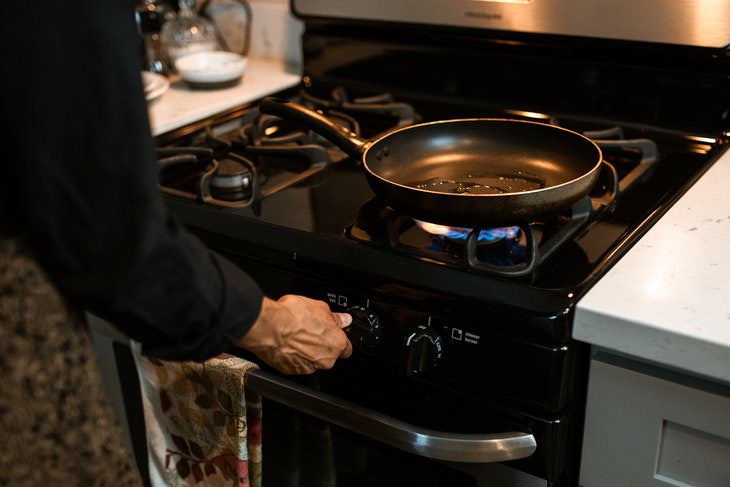

Most of us know just how important it is to
season a cast-iron pan, but when it comes to nonstick cookware, we
often use it as is straight out of the box. This is a major mistake, as
it will not only make the nonstick pan more susceptible to damage, but
it will also make foods stick to the surface of the pan, even if it’s
sold as non-stick.
If you have an unseasoned nonstick pan or two at home, don’t worry, you
can do this process at any time. Simply pour a teaspoon of any oil on a
clean pan and put it on medium heat for 1-2 minutes, rolling the oil
around to ensure the entire surface of the pan is coated. Wait for the
pan to cool completely and wipe away any oil residue with a paper towel.
After the seasoning process, your cookware will be truly nonstick and
will last longer, too. You can repeat the seasoning process if you
notice that the pan is losing its sheen and functionality.
3. Combining nonstick pans with metal cooking utensils
Are you using metal spatulas and other cooking utensils with your
nonstick pans? Or maybe, you just accidentally scratched the pan with a
fork or a spoon when tasting a dish? When any kind of metal makes
contact with your nonstick pan, it will scratch off the protective
surface of the pan in a matter of seconds and will ruin it, so it’s a
big no-no. You should have a set of plastic or wooden cooking utensils
if you own any kind of nonstick cookware and use that to cook and
retrieve food from the pots of pans.
4. Using abrasive sponges to clean nonstick cookware
Many home chefs know that using metal with nonstick cookware is a big
no-no, and you do, too, as we’ve just explained earlier. Alas, they
still often use abrasive metal sponges and scrubbers to clean the pan,
which can actually ruin your nonstick pan in a matter of months! It’s
important to note that the coating of nonstick pans, though very
effective, is also extremely fragile, and you need to clean it with
great care.
To clean these pans properly, we recommend always pre-soaking nonstick
cookware in some warm soapy water, especially if you’re dealing with a
persistent baked-on stain. After at least 10 minutes of soaking, you’ll
be able to just wipe away the stains with a regular sponge. Also, be
careful with your choice of cleaner and avoid using abrasive cleaning
powders or liquids with scrubby particles in them, as these, too, can
degrade the nonstick coating.
5. Turning up the heat too high
Few people know this, but some nonstick pans are actually very
temperature sensitive and shouldn’t be used for high-heat cooking.
Teflon-coated cookware can be actually dangerous for your health when
used at high heat or when scratched. If you have Teflon cookware, use it
at medium temperatures, for example, to prepare pancakes, French toast,
or omelets.
Cooking techniques that require higher temperatures, such as searing or
frying, are best combined with stainless steel pans, and yes, they can
be nonstick and coated with porcelain, ceramic, or enamel.
6. Putting nonstick pans in the oven
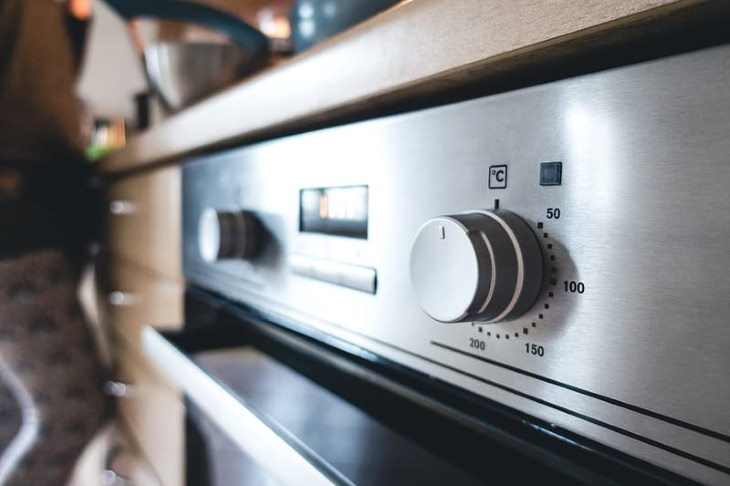

This is a logical continuation of the
previous point - high heat and nonstick cookware don’t always mix well,
and by far no every nonstick pan can handle oven temperatures. Each type
of nonstick cookware and each manufacturer has a specific temperature
limit that’s safe, so make sure to check if your specific cookware is
oven-safe before you decide to finish off a dish in the oven.
7. Using cooking spray
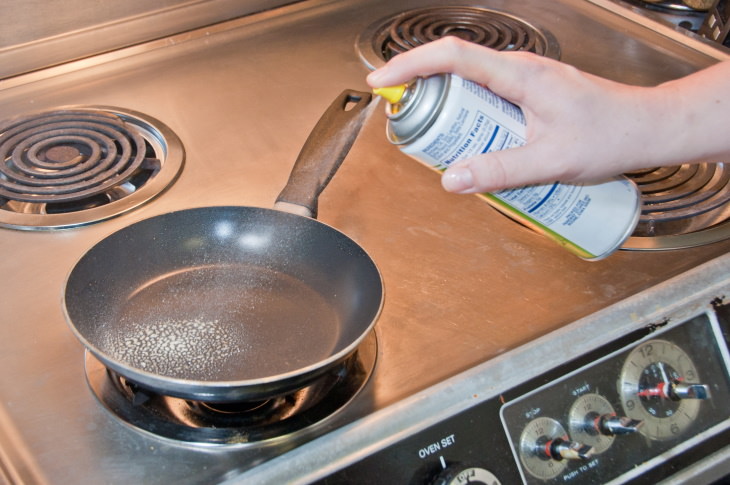

Do you have a ring of grime accumulating on
the sides of your nonstick pans? If you’re using cooking spray, it’s
certainly the culprit behind that problem. As Lisa Freedman from the
Kitchen pointed out, “A lot of people use cooking spray with nonstick
cookware, thinking that more is more. But over time, you’ll start to see
a build-up of the spray that doesn’t burn off during cooking. It gets
sticky and gross.”
Instead, use natural oils in the smallest quantities when working with
nonstick pans. After all, the minimal use of oil is one of the biggest
advantages of nonstick cookware.
8. Warming up the cookware empty
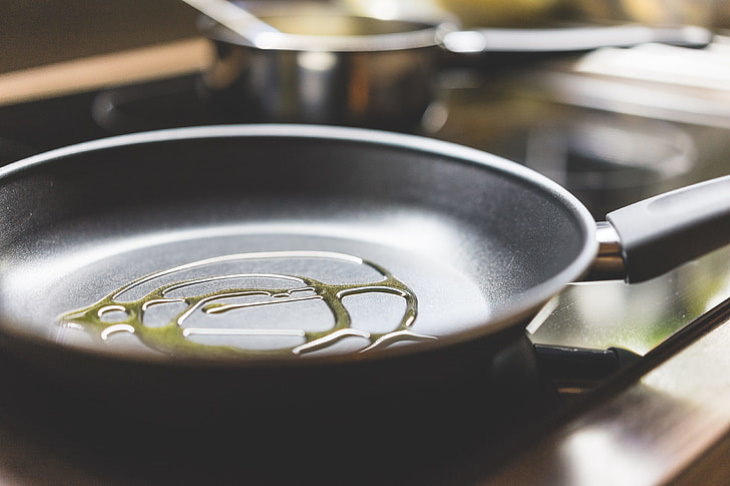

While it’s a great idea to preheat an empty
cast-iron skillet before adding in oil or butter, the same rule doesn’t
apply to nonstick cookware. If you leave it on the stove empty and turn
up the heat, it will start emitting dangerous fumes, which is obviously
the last thing anyone wants.
As Hannah Crowley from America’s Test Kitchen recommended to Eat This
Not That, “Make sure there's a little bit of fat in the pan as it warms
up. The smoke point of oils and butter is lower than the off-gassing
temperature, so that's a great visual cue for when your pan is too hot."
9. Cleaning nonstick cookware in the dishwasher
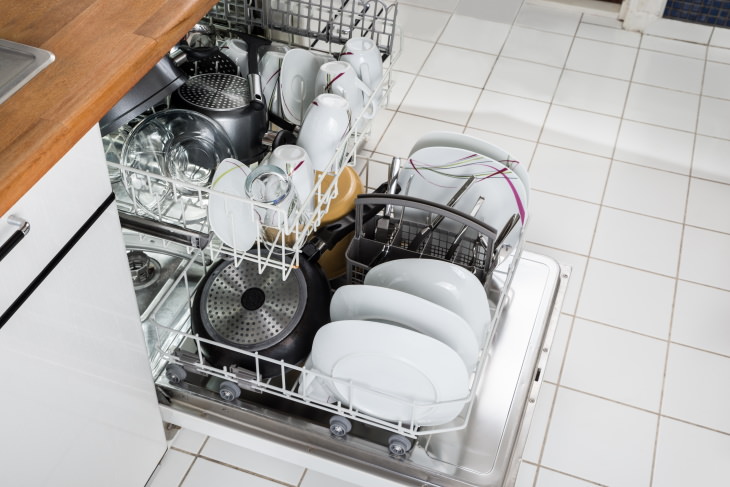

Since you can’t use the good old scrubby
sponge to clean nonstick pans, the best decision is to just throw it in
the dishwasher when it needs a deep cleaning, right? Unfortunately, that
is not the case, and it is, in fact, better to wash nonstick cookware
by hand using the soak and sponge method we outlined above.
The reason why using the dishwasher is a bad way to clean nonstick pans
is due to the high temperatures and harsh detergents used. These will
make the coating of the cookware to wear away and flake off, rendering
it unusable.
10. Storing nonstick pans the wrong way
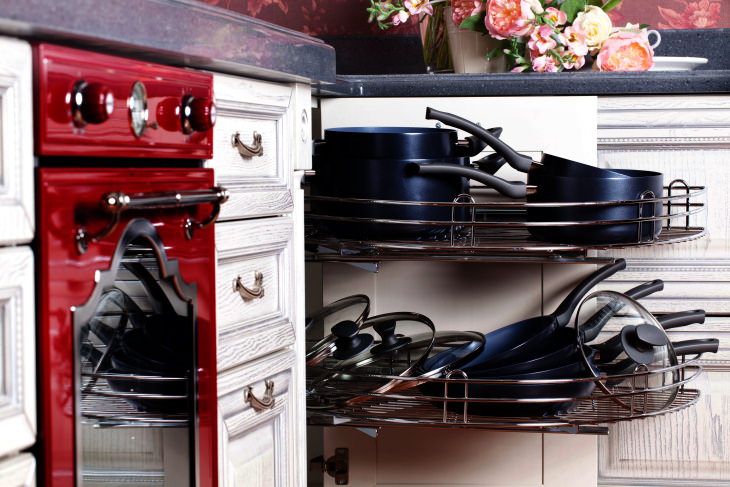

So, you’re following all the rules and
avoiding all the mistakes we’ve mentioned above yet your nonstick
cookware still doesn’t last more than a year or so? The reason why they
become unusable so fast may be explained by the way you store it. If
you’re just stacking nonstick pans one inside the other haphazardly,
they will rub against each other and the nonstick coating will be
depleted, slowly yet surely.
Therefore, be smart about the way you store nonstick pans. The best way
to ensure nothing is scratching their surface is by simply hanging them
on hooks or a pot rack. This way, your pans will be safe from harm, and
they’ll also be much easier to access when you need them.